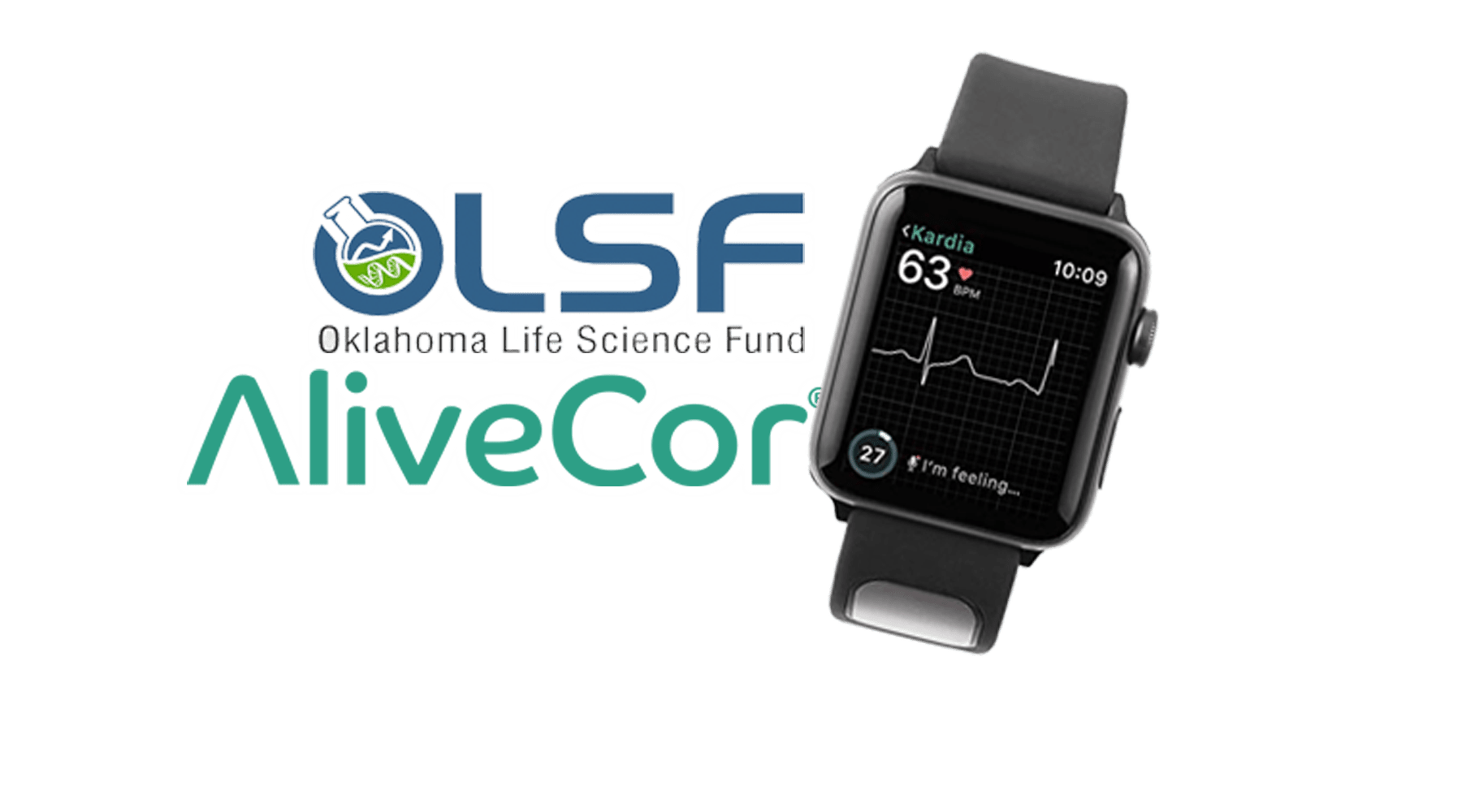What do Bill Gates and OMRF have in common?
Visionary outlook and risk tolerance.
Don’t believe me? Just check the Microsoft founder’s top 10 breakthrough technologies of 2019.
On that list, you’ll find AliveCor, startup that’s created an Apple-Watch-compatible band to detect the three most common heart arrhythmias.
Founded by Oklahoma City cardiologist Dr. David Albert, AliveCor also happens to be a biotechnology company that OMRF invested in many years ago. But this wasn’t some kind of high-risk, high-reward bet on our part. It was a mission-driven commitment to our state’s biotech community that we made as a participant in the Oklahoma Life Science Fund.

Founded in 2000 by Dr. William Paiva, the idea behind OLSF was to drive venture capital to life sciences companies based on Oklahoma technologies. As an Oklahoma scientist and investor, Dr. Paiva was the right fit to manage this forward-looking effort.
A native Oklahoman, Dr. Paiva earned a Ph.D. in microbiology at the University of Oklahoma while doing his doctoral work in OMRF’s labs, studying protein membranes in E coli under the guidance of Dr. Philip Silverman.
After completing his M.B.A. at Dartmouth and spending several years in the financial and pharmaceutical sectors on the East Coast, Dr. Paiva decided to return to Oklahoma. He saw an opportunity to contribute to his home state’s biotechnology economy, a niche he knew well.
Dr. Paiva recognized many promising biotech opportunities in Oklahoma that needed business and financial support to get them to the next level. But he knew this would be a tough sell in a state where folks were happy to tolerate risky investments in the oilfields, but not in companies looking to create breakthrough medical technologies. (Remember, two decades ago, Cambridge and Kendall Square as we know them didn’t exist; even the Bay Area venture capital community was still in its infancy.)
It was at this crucial moment that OMRF showed, in Dr. Paiva’s words, “visionary leadership.” Joined by our longstanding partners the Presbyterian Health Foundation and the Samuel Roberts Noble Foundation (now the Noble Research Institute), we not only invested in OLSF to support this effort to grow biotechnology in Oklahoma, but we worked with Dr. Paiva to find others who would also help stake this effort.
OMRF and others subsequently re-upped for another round of funding. And now, those investments have birthed success stories for Oklahoma like AliveCor and Selexys (which I’ve previously written about in BioBlast). These wins have not only proven to be success stories for the state, but they’re now beginning to yield significant returns for OLSF investors.
Recently, LLR Partners completed an acquisition of another OLSF portfolio company, Tulsa-based CareATC. Like the acquisition of Selexys by Novartis, that transaction rewarded patient OLSF shareholders. And with other portfolio companies like AliveCor boasting major progress and A-list investors – Qualcomm Ventures, Khosla Ventures, Mayo Clinic Ventures – the hits should keep on coming.
For OMRF, the Oklahoma Life Science Fund represented the perfect marriage of risk and mission. With OLSF’s success, we’ve seen not only economic rewards, but we’ve helped grow the state’s biotech ecosystem. That ecosystem, I’m confident, is only beginning to yield its fruits.



